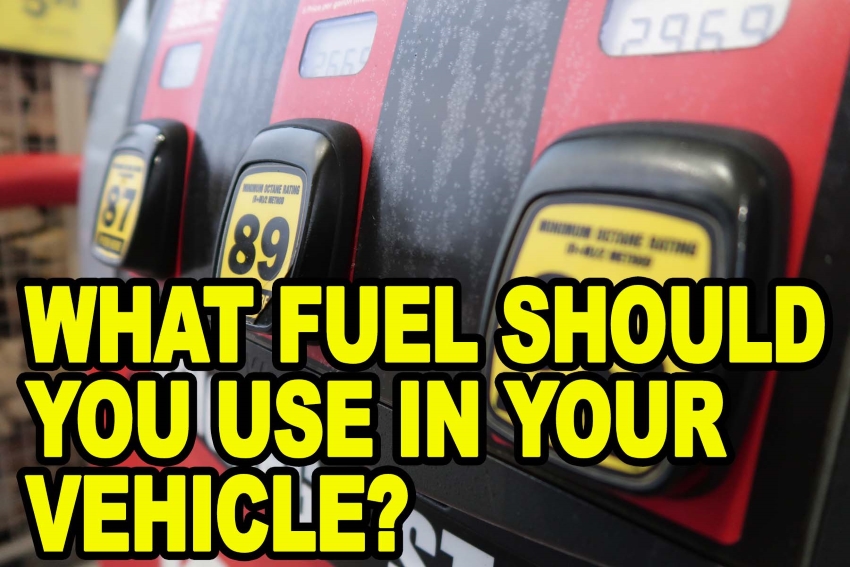What Fuel Should You Use in Your Vehicle?
This #sponsored blog brought to you buy Mercury Insurance

This is a question I get from time to time and I’ll do my best to address it here so that the next time you’re at the pump, you can save money and put the best possible fuel in your vehicle.
Most fueling stations in the U.S. offer three different types of fuel: Regular, Mid-grade, and Premium. Each fuel type has an accompanying Octane Rating.
The Octane Rating number indicates the rating of a fuel’s resistance to burning – that’s the simplest explanation I can offer. There are different methods of measuring octane, and different countries use different methods when posting a fuel’s octane rating. For instance, the octane rating in the U.K. are different from the U.S. and also Australia.
 In the U.S., we use the (R+M)/2 method: R=(RON) or Research Octane Number, M=(MON) or Motor Octane Number. These numbers are calculated by fuel engineers in a controlled environment when testing fuels. I’m not going to get into the specifics of the science here, but at least you know what that equation on the pump stands for near the octane number.
In the U.S., we use the (R+M)/2 method: R=(RON) or Research Octane Number, M=(MON) or Motor Octane Number. These numbers are calculated by fuel engineers in a controlled environment when testing fuels. I’m not going to get into the specifics of the science here, but at least you know what that equation on the pump stands for near the octane number.
Let’s get back to my original explanation of octane as a measure of a fuel’s resistance to burning. The higher the octane number, the less a fuel wants to burn. So, a fuel rated 93 octane will not burn as well as fuel with an 87 octane rating.
Why would Premium fuel be designed not to burn? Great question. Premium fuel is used in high performance engines. High performance engines create a lot more heat than regular engines. Because of this extra heat, the fuel will want to burn before the spark plug tells it to, and sometimes after it has already fired. If this happens, it can cause engine damage. When the air fuel mixture in an engine ignites before the spark plug fires it’s called pre-ignition. When the mixture ignites after the spark plug fires, it’s called detonation. Either condition can damage the engine permanently.

 Engineers have incorporated this into their designs and have put sensors and controls in place to detect pre-ignition and detonation. When the engine management system detects pre-ignition or detonation, it changes the engine parameters to produce less power to lower the heat in the engine, and eliminate the condition causing too much heat. In short, the computer takes power out of the engine until the problem goes away as a matter of self-preservation.
Engineers have incorporated this into their designs and have put sensors and controls in place to detect pre-ignition and detonation. When the engine management system detects pre-ignition or detonation, it changes the engine parameters to produce less power to lower the heat in the engine, and eliminate the condition causing too much heat. In short, the computer takes power out of the engine until the problem goes away as a matter of self-preservation.
So what fuel should you use in your engine? Check your owner’s manual, your instrument cluster, or inside your fuel door. If any one of these places say “Premium Unleaded Fuel Only”, that’s what you should use. If it doesn’t say that in any of those locations, use the most affordable fuel available.

What about Mid-Grade? In my opinion, Mid-Grade fuels are a way to get a little more money from you. If you don’t have a high performance engine, Premium fuel is not required—meaning, it is designed to run on the lowest octane possible.
Granted, some fuels have additives that are beneficial to your engine, but these additives are often only added to the Premium fuels. They don’t show up in the Mid-Grade or Regular fuels. Do you need those additives? That’s a complicated, but in short, most likely you don’t. If your engine was designed to run on Regular fuel, put Regular fuel in it and you’ll be just fine.



So if you’ve been putting Mid-Grade in your vehicle that doesn’t require Premium fuel, stop wasting your money. If you’re putting Regular fuel in your performance vehicle, you’re losing power and possibly hurting your engine. If you want to put Premium fuel in your vehicle that only requires Regular fuel, you can, but personally, I can think of better ways of spending my money.
Be Safe
Have Fun
Stay Dirty
ETCG
 Our Address
Our Address



